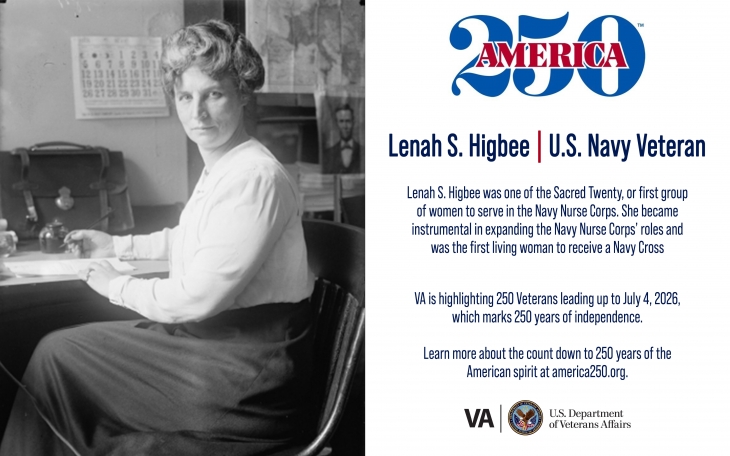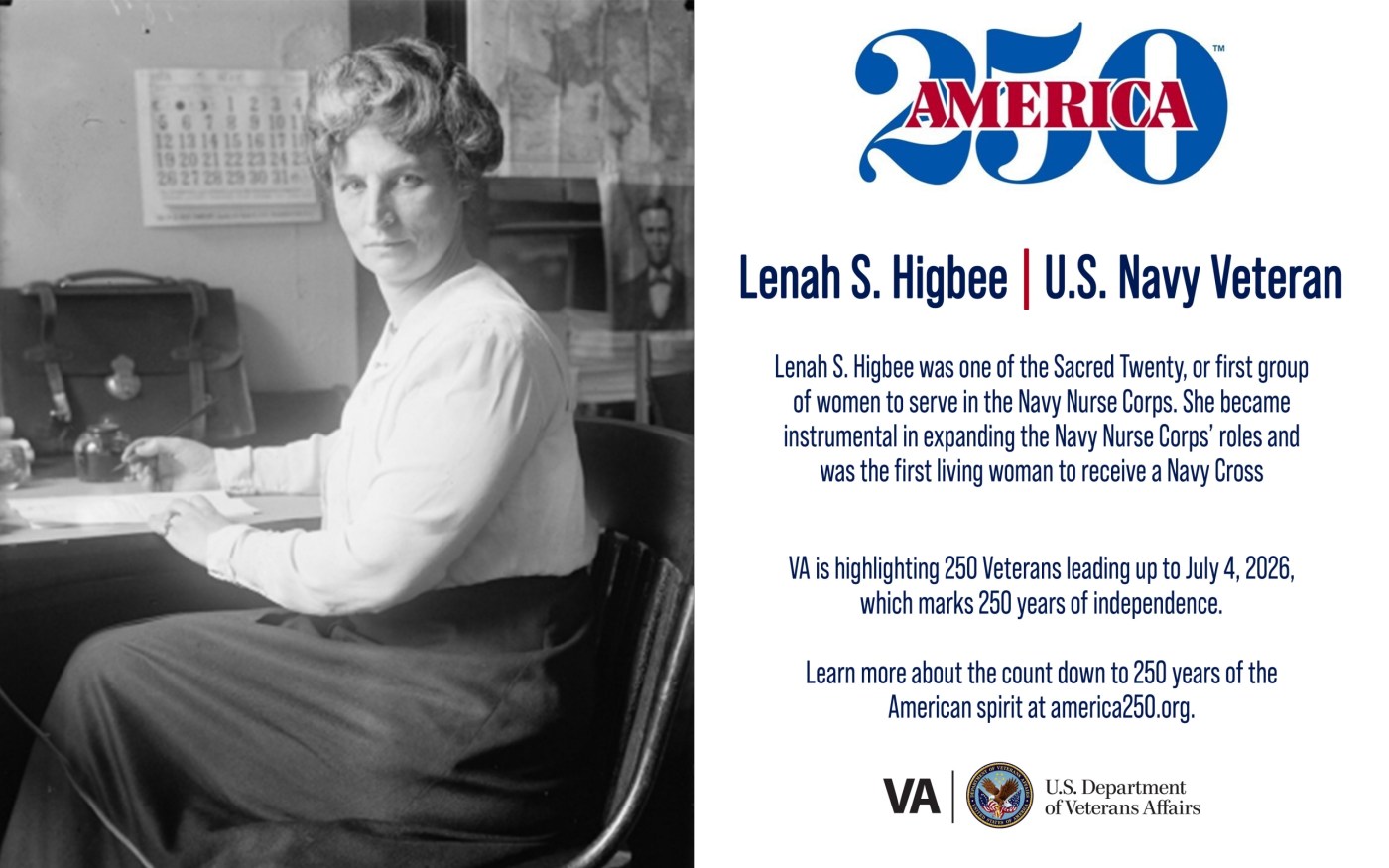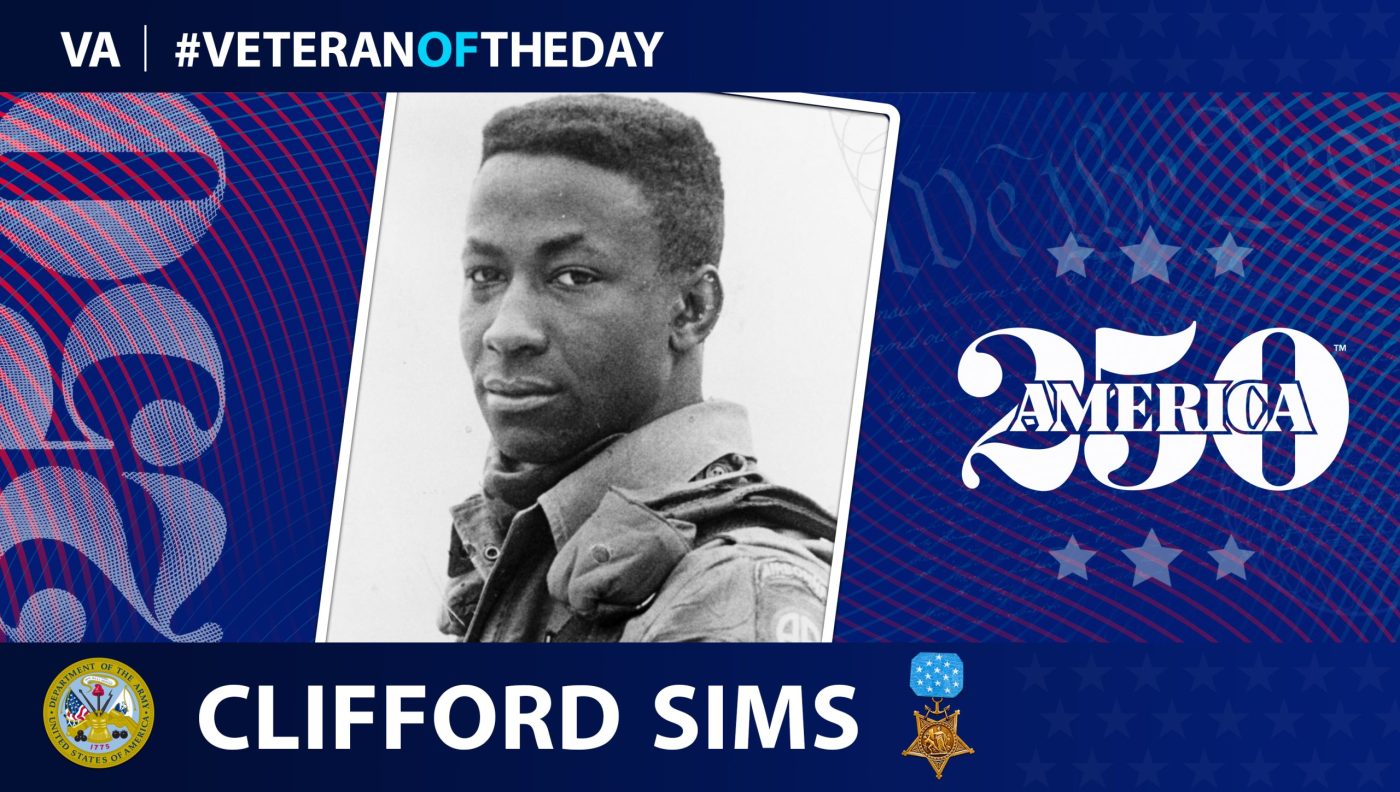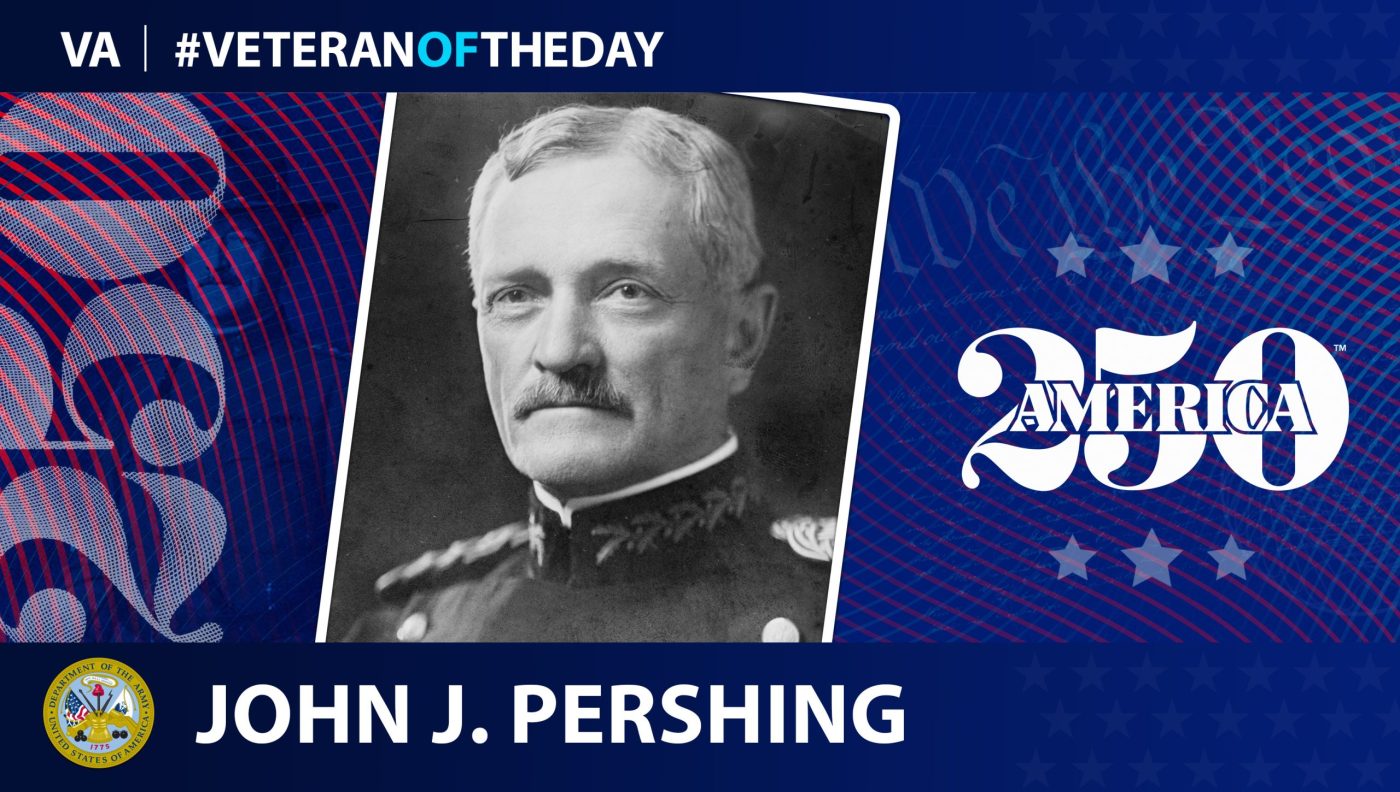
This week’s America250 salute is Navy Veteran Lenah S. Higbee.
Originally from Chatham in New Brunswick, Canada, Lenah S. Higbee came to the U.S. to study nursing. She completed training at the New York Postgraduate Hospital in 1889 and began working as a surgical nurse for a private practice. During this time, she met Marine Corps Lt. Col. John Henley Higbee. They married in 1899.
After her husband’s death in the spring of 1908, Higbee decided to volunteer for the newly formed Navy Nurse Corps program and traveled to a naval hospital in Washington, D.C. to take examinations. That October, Higbee became part of the “Sacred Twenty,” the first group of female nurses to serve in the Navy.
Based on her skill and experience, Higbee became a chief nurse during the spring of 1909. But the women of the Navy Corps also dealt with discrimination and doubts about their abilities. After five months of training, Higbee and two of her fellow nurses went to Naval Hospital Norfolk in Virginia. Though her supervisor was initially skeptical of the nurses, Higbee worked hard at Norfolk and earned the respect of her male peers.
When the first superintendent of the Navy Nurse Corps resigned in 1911, Higbee took her place. She worked with the Bureau of Medicine and Surgery in Washington, D.C., but also sought to improve the conditions of her fellow nurses. As superintendent, she lobbied for better pay, military-provided living quarters and more opportunities for field work. When Europe entered World War I, Higbee appeared on numerous healthcare committees to prepare for the possibility of U.S. involvement.
“For two years prior to our actual entering into [WWI], warnings had been sounded and such tentative preparations as were possible had been made by those who were wise to the significance of war signs,” she later remembered.
It was Higbee who recommended that nurses join transport ships like USS Dolphin. When the U.S. entered World War I in April 1917, Higbee oversaw nurse teams deployed to the front lines in France and Belgium and hospitals in England, Scotland and Ireland. During the 1918 Spanish Flu Epidemic, Higbee continued to provide for and work alongside her fellow nurses to treat sick patients. She also oversaw the expansion of the Navy Nurse Corps. The corps grew to over 1,300 nurses by November 1918 and included hospital corpsmen in the Marine Corps.
By the end of World War I, over 1,300 Navy nurses had served in hospitals in the U.S., the United Kingdom and France. According to a 2020 news article, a contemporary paper wrote in June 1918 that “‘The most needed woman’ is the war nurse…In reality, the war nurse is a soldier, fighting pain, disease and death with weapons of science and skill. […] She goes prepared to share the risks and fortune of war, ready to make any sacrifice.” In November 1920, Higbee received a Navy Cross for her work. She was the first female living recipient to receive the medal. Her citation reads: “For distinguished service in the line of her profession and unusual and conspicuous devotion to duty as Superintendent of the Navy Nurse Corps.”
Following her retirement in November 1922, Higbee relocated to Winter Park, Florida. She remained there until her death in January 1941 at the age of 66. She was buried beside her husband at Arlington National Cemetery in Virginia.
In 1944, the Navy named USS Higbee in her honor, the first American warship named for a woman. The ship served during World War II, Korea and Vietnam before decommissioning in 1979. In 2021, the Navy christened guided missile destroyer Lenah Sutcliffe Higbee (DDG 123).
“Higbee’s professionalism, leadership and selfless dedication to her nurses and patients reflect on the highest standards of naval service,” said Dr. Regina T. Akers in an article on the World War I Centennial Commission site. “She and her nurses provided the best treatment possible often under some of the worse conditions. Higbee will continue to inspire all who learn of her courage, honor and commitment.”
We honor her service.
America250
VA is highlighting 250 Veterans leading up to July 4, 2026, which marks 250 years of independence. Learn more about the count down to 250 years of the American spirit at https://america250.org/.
Contributors
Writer: Sarah Concepcion
Editors: Alexander Reza and Annabelle Colton
Researcher: Timothy Georgetti
Graphic Designer: Brittany Gorski
Topics in this story
More Stories
Today's America250 and #VeteranOfTheDay honors Army Veteran Clifford Sims, who was posthumously the Medal of Honor.
America250 wants you to share your story. We want to hear the story of your service and your reflections on our nation’s past, present and future.
Today's America250 and #VeteranOfTheDay is Army Veteran John J. Pershing, who became General of the Armies of the United States, the highest rank possible for any member of the United States Armed Forces.






